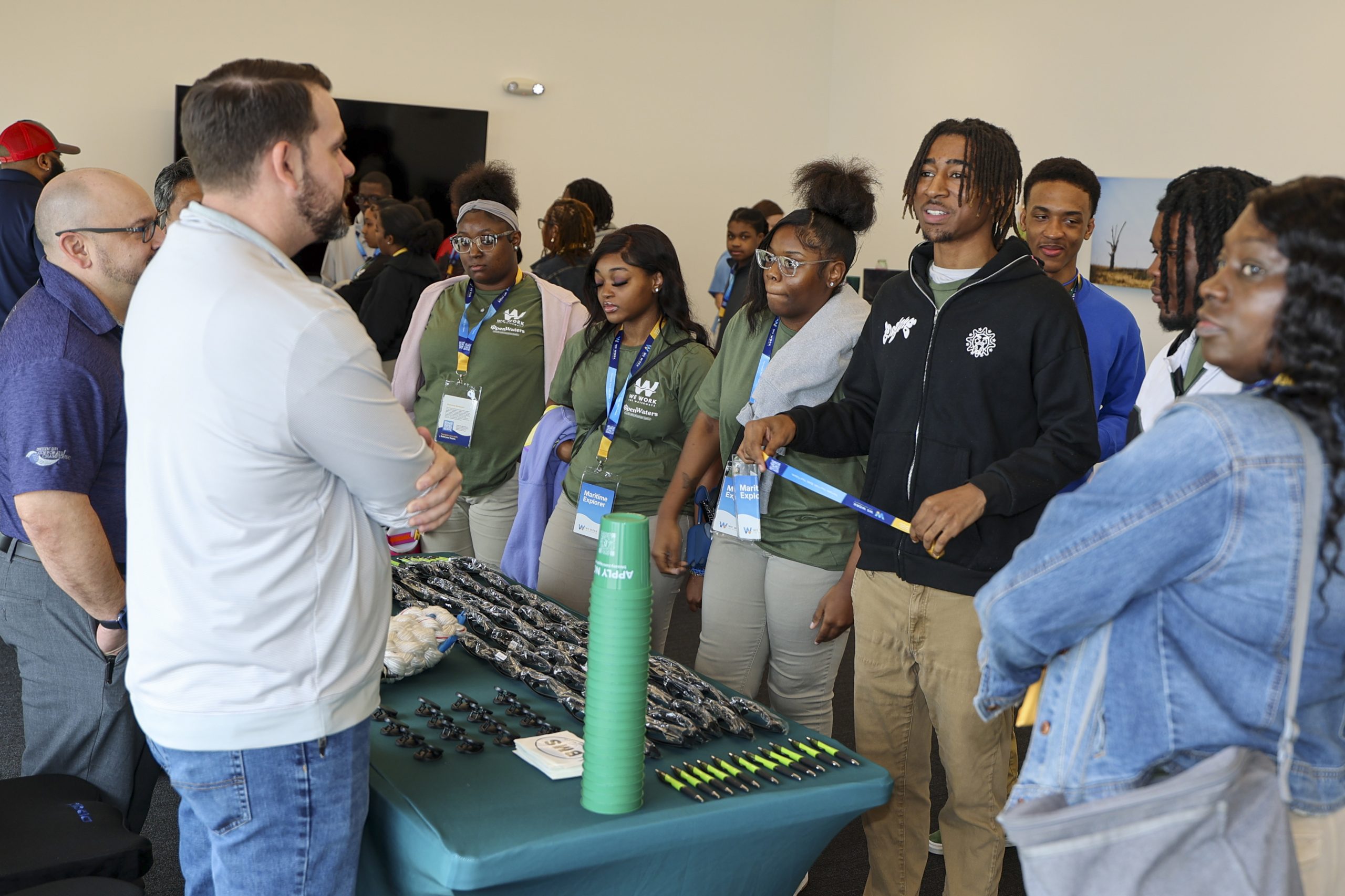“Today I learned that I’m important, and that I matter.”
These were the words of a student when asked what the student learned from the We Work the Waterways (WWW) event held in February in Baton Rouge, La. The student had participated in the “elevator pitch” station with Blessey Marine Services, where students learned how to shake hands, look an interviewer in the eye and pitch themselves and their best qualities in just a few minutes.
Blessey has taken up this station as its signature offering during WWW industry interaction days. Before the students leave for another station, the team makes sure to tell them, “We are here today because you matter, you’re important, and you make a difference.”
Adrian Foret, talent acquisitions specialist at Blessey Marine, said the idea to start incorporating this message came from a conversation with his brother about the struggle to make a difference.
“There are so many influences in the world that kids deal with, so much that’s so brutal,” Foret said. “So we wanted to give them something positive and let them know that they do make a difference and that people do care about them, that they can change the world.”
This is exactly the message that WWW Executive Director Errin Howard hopes each student takes away from a day with We Work the Waterways.
“It shows we value them as individuals because they live and work in communities that we live and work in,” Howard said. “It shows the students that if they do come into our industry that it’s special and that you’re not just going to become a number. It can become a career where they’re valued.”
As the elevator pitch station suggests, maritime skills aren’t the only focus at We Work the Waterways learning events. While activities such as line handling, water safety and towboat tours are important, WWW also incorporates “soft skills” stations into the day. These stations specifically highlight skills that aren’t taught on the job and can be applied to any career.
“By getting personal with them it helps kids identify and get more involved in the day,” Howard said. “The elevator pitch station is popular because kids get to talk about themselves, and they enjoy that.”
Foret explained that getting to interact with kids at the elevator pitch station goes beyond what he and his colleagues do when hiring and training for Blessey Marine. When training for a maritime career, a young person’s future as a mariner is prioritized. At We Work the Waterways, a student’s whole future becomes the focus.
“Even though they might not come work for us, it’s something they can take with them,” Foret said. “They may forget they talked to us one day. But there’s going to come a day when they go to an interview and they say, someone told me to leave my phone behind, to dress decently. They’re going to remember us when they need to.”
We Work the Waterways is expanding its soft skills stations with a few new ones in development, including a health and wellness station. The financial literacy station is also expanding, thanks to a panelist’s advice to students, saying he wished someone had told him as a teenager how important it is to save money.
“From there we came up with the idea to include an emphasis on saving money in the financial literacy station,” Howard said. “We talk about how much money you can make in the industry and what you can do with that money, but we learned we were lacking talking to them about savings.”
Fidelity and Regions banks will be partnering with the organization to bring this new element to life.
We Work the Waterways is currently working on a new website. Phase One is complete and available to view at www.weworkthewaterways.com. Phase 2 is expected to go live by the end of the summer.
The first WWW event for fall 2025 will be held in Paducah, Ky. on September 11.
Featured image caption: Blessey Marine Services Talent Acquisition Specialist Adrian Foret (left) and Training Manager Thomas Cramer meet with students as part of the “elevator pitch” station at the We Work the Waterways Industry Interaction Day in Baton Rouge, La., earlier this year. (Photo courtesy of We Work the Waterways)




